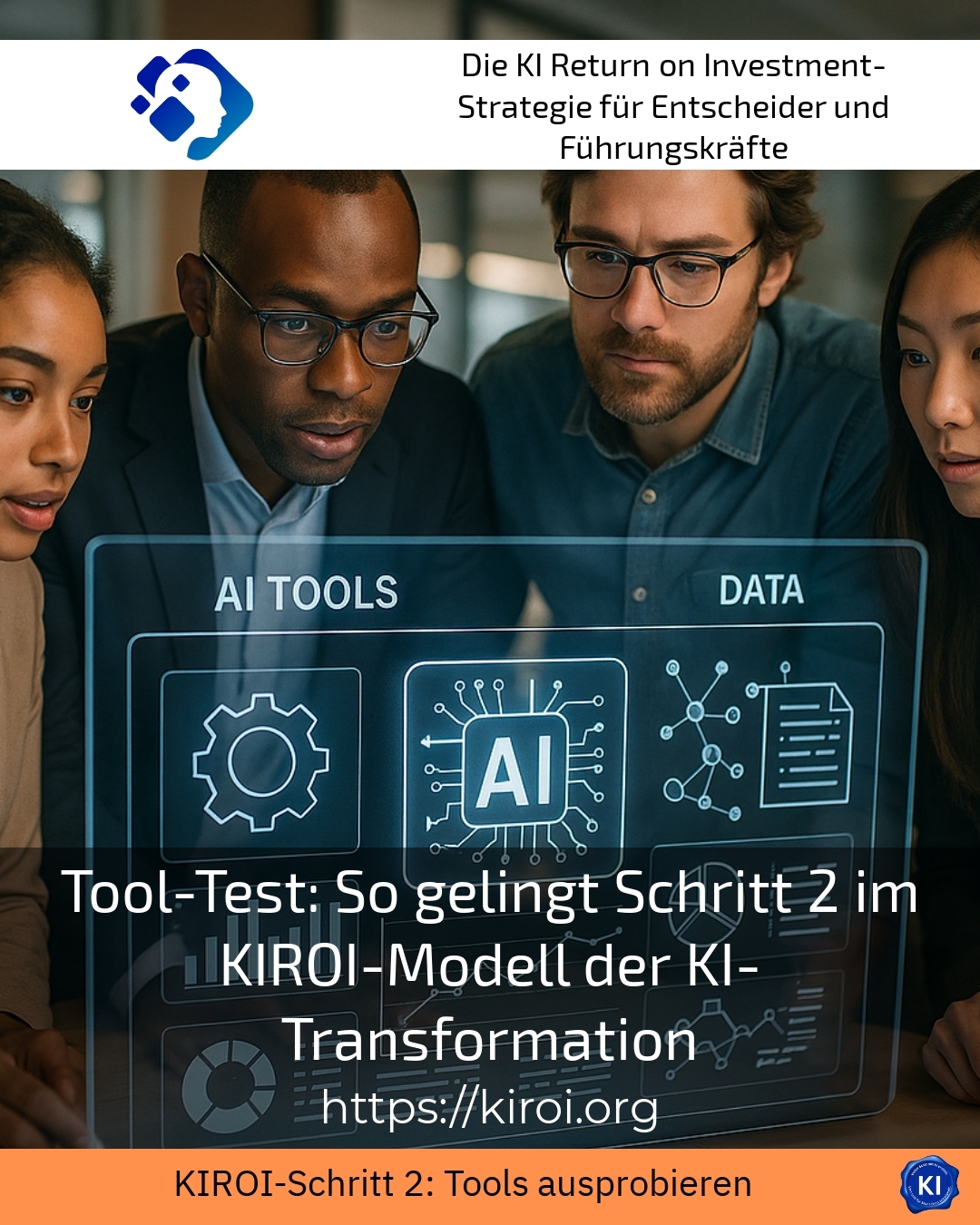The term Tool test describes a central phase of many transformation processes, particularly within the KIROI model. Step 2, the tool test, centres on the targeted testing and evaluation of technologies in order to find out which tools can effectively support the company. This process is essential for setting the course and forms the basis for the subsequent scaling and integration of innovations.
The importance of the tool test in the KIROI model
The tool test is not just a technical test - it combines practice with strategic reflection. In companies from a wide range of industries, such as mechanical engineering, energy supply or the service sector, this phase is used to test which solutions prove to be pragmatic and effective. Pilot projects and proof-of-concepts are important methods for making technological innovations tangible.
For example, a manufacturer of automation technology used various sensor solutions in a tool test to assess their data quality and reliability in live operation. In property management, companies experimented with AI-supported software tools for automated energy consumption analysis. Service organisations, on the other hand, tested chatbots and virtual assistants to improve customer communication.
Concrete steps in a successful tool test
The implementation of a tool test follows a clearly structured procedure that ensures that all relevant aspects are considered:
- Selection of suitable tools: The selection is based on the objectives defined in the first step. For example, a logistics company tested various tracking systems for their compatibility with existing processes.
- Practical testing: The tools used must be tested under realistic conditions, such as a marketing agency using new automation tools for campaign planning directly in a customer project.
- Obtain feedback: The user experience of employees is crucial. For example, training workshops in the healthcare sector provided valuable feedback on both usability and integration.
- Evaluation and customisation: Results are systematically analysed and the tools are adapted or replaced by alternatives if necessary.
Practical examples of tool testing in various industries
The tool test accompanies a wide range of industries in their digital development. The following examples illustrate its practical relevance:
BEST PRACTICE with one customer (name hidden due to NDA contract) A medium-sized IT company carried out a tool test for collaborative platforms. The result was the introduction of a system that significantly improved cross-departmental communication and advanced projects in an agile manner. The decisive factor was the early involvement of all those involved in order to create acceptance and reduce inhibitions.
In the automotive industry, tool testing is often used to evaluate new software for vehicle integration. One OEM tested various AI-supported diagnostic tools to make maintenance processes more efficient. At the same time, a plant manufacturer used test runs with digital twins to simulate production lines and make potential optimisations visible.
The tool test is also used in the financial services sector to test compliance tools and risk management systems under real-life conditions. This gave employees the opportunity to try out innovative solutions first-hand and assess their contribution to process reliability.
Tips for a successful tool test
- Early identification of key people as AI Champions or project ambassadors who can pass on their expertise and enthusiasm.
- Transparent communication about goals, interim results and challenges establishes trust and promotes acceptance.
- The tests should not be carried out in isolation, but should be embedded in coordinated governance structures in order to minimise risks and ensure data quality.
- Regular reflections and adjustments help to dynamically adapt the tool test to changing requirements and findings.
Tool test as a bridge to sustainable transformation
The tool test is more than just a technical phase. It creates a common basis of experience within the company and accompanies the change in culture and working methods. It thus forms the foundation for the next steps in the KIROI model, in which innovations are scaled and anchored sustainably.
Companies that carefully organise this step create impetus for a culture that is open to new ideas. Through the tool test, employees discover new possibilities and gain confidence in using digital tools. In this way, the AI transformation is experienced as a continuous process that is accompanied and supported.
My analysis
The Tool test in the KIROI model is a crucial stage that makes technological innovations tangible and assessable. Practical pilot projects and the involvement of all stakeholders generate valuable insights and a shared understanding of the way forward. The active involvement of employees and a clear communication strategy are key factors for success. Companies benefit from a systematic tool test that not only tests tools, but also supports the culture of change. This step guarantees a sound basis on which further innovations can be sustainably designed.
Further links from the text above:
[1] AI for digital transformation (IBM)
[2] A brief guide to AI transformation (SpringerProfessional)
[3] Successfully shaping AI transformation
[4] AI strategy and culture: How to make your AI transformation a success (MHP)
[5] AI strategy and culture: transformation starts with people (Handelsblatt)
For more information and if you have any questions, please contact Contact us or read more blog posts on the topic Artificial intelligence here.















